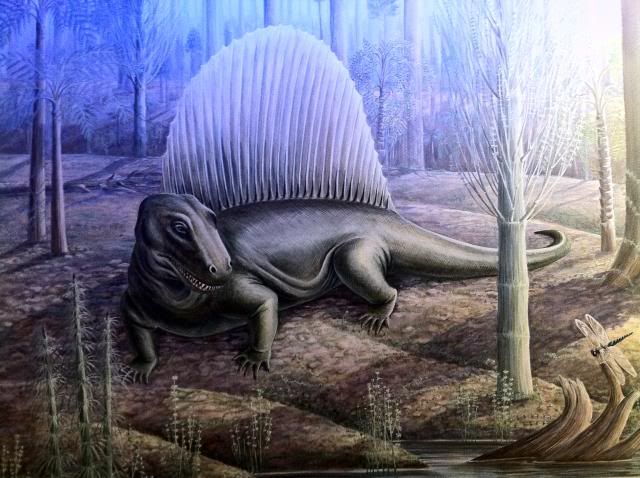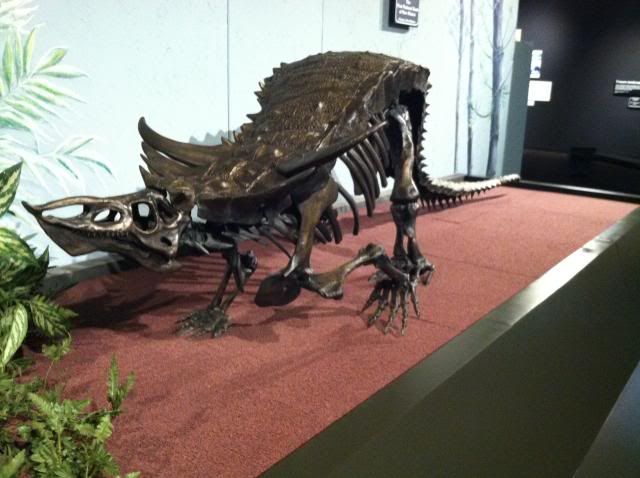Last month’s challenge was very easy. It was so easy that duclicsic posted a correct answer within minutes of the blog going up. However, later in the month Aught3 posted an even more correct answer:
Dimetrodon limbatus
Reason: Google-fu
This is a specimen of Dimetrodon and Aught3 is even more correct in that it is specifically Dimetrodon limbatus.

(Taken at the New Mexico Museum of Natural History and Science)
Dimetrodons inhabited the earth 295 – 272 million years ago, during the Permian. Dimetrodons were most likely the top predator on earth during that time. The most prominent feature of Dimetrodon is the sail on its back. The sail was most likely used as a heat regulator, but some scientists have suggested that it might be an example of sexual selection, similar to the Peacock’s tail. Either way, the sail on its back and four-legged posture makes Dimetrodon one of the easiest prehistoric critters to identify.
There is confusion about Dimetrodon, in that several people believe that it was a dinosaur, I think this is because Dimetrodons are always found in Prehistoric Play Sets and most people believe dinosaurs were just big lizards. Dimetrodon does resemble a large lizard with a sail on its back. However, there are three main reasons Dimetrodon was not a dinosaur; the first most obvious one is that it is much older than any dinosaur. The second is the sprawling, lizard-like stance of its legs. Dinosaurs’ legs, unlike lizards, are directly under their bodies and not protruding from the side of the body like modern lizards. The third is that Dimetrodon is actually more closely related to modern mammals than it is to reptiles such as dinosaurs.
Dimetrodon belongs to the synapsid clade along with all mammals. This means that behind the eye, there is only one hole for muscle attachments. Dinosaurs belong to the diapsid clade, meaning they have two holes behind the eye for muscle attachments.
Moving on to this months challenge:

(Taken at the Dinosaur Museum and Natural Science Laboratory)
Good luck and happy 2014.